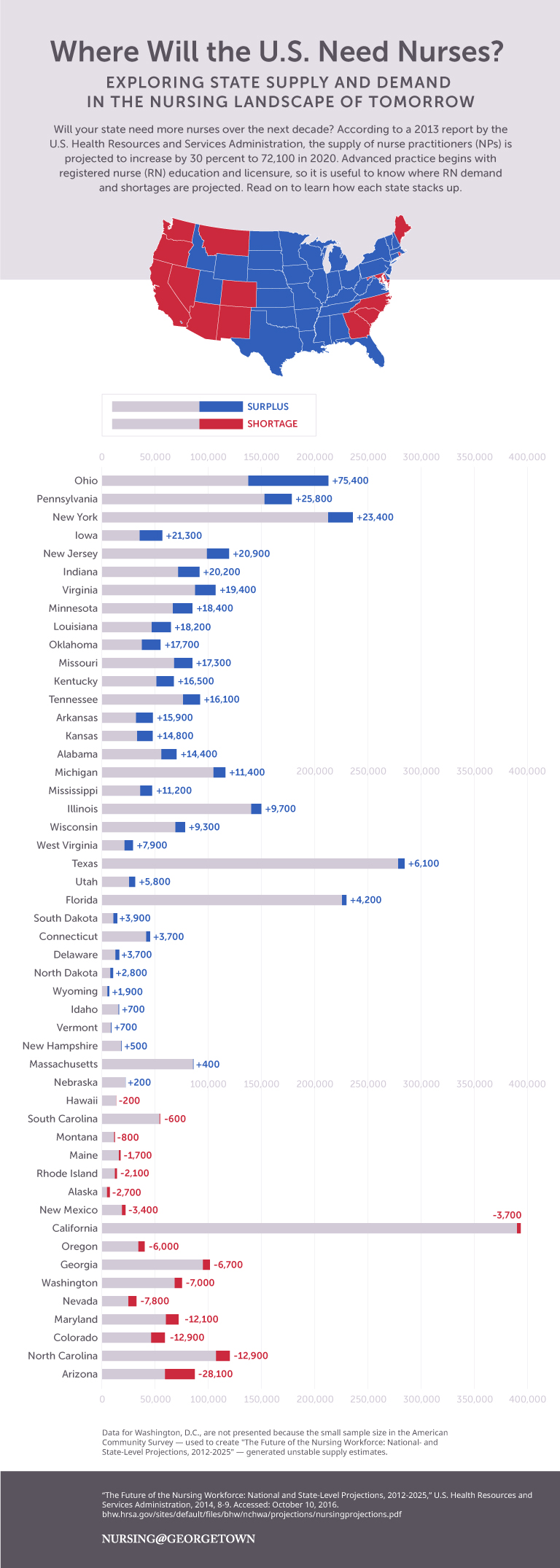Nurses make up the largest segment of the health care workforce in the United States. There are more than 3.1 million registered nurses nationwide and about 85% of these RNs are employed in nursing. Yet, some states are predicted to experience a nursing shortage during the next decade as the result of changes in health care policy, an aging population, and nursing schools struggling to make space for more students.
A report from the Georgetown University Center on Education and the Workforce titled, “Nursing: Supply and Demand Through 2020,” predicts a shortage of approximately 193,000 professional nurses by 2020 based on the age of the current nursing workforce, the size of graduating nursing classes, and nurses’ career decisions. A 2012 report titled, “United States Registered Nurse Workforce Report Card and Shortage Forecast,” concurs. It predicts a nursing shortage by 2030 throughout the country, especially in the West and South, because of projected changes in population.
Nursing@Georgetown’s online FNP program created the graphic below based on data from a 2014 HRSA report, “The Future of the Nursing Workforce: National- and State-Level Projections, 2012-2025,” to show which states will have a shortage of nurses and which will have a surplus.
To learn more about the nursing landscape, visit Nursing@Georgetown’s website to read the original blog post.

- Mapping America’s Predicted State-by-State Nursing Demand - March 22, 2017



